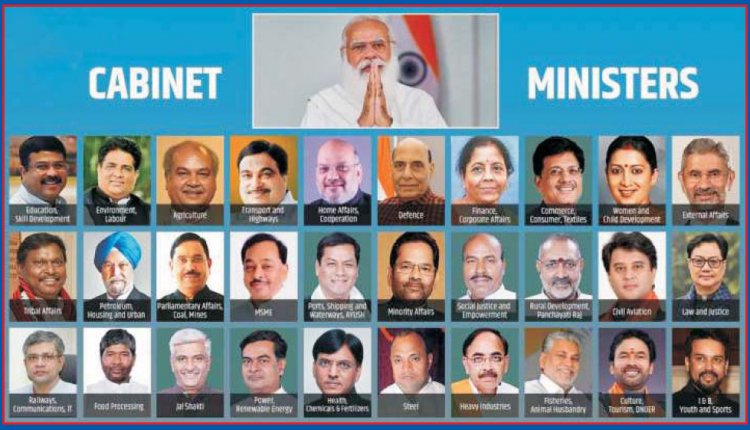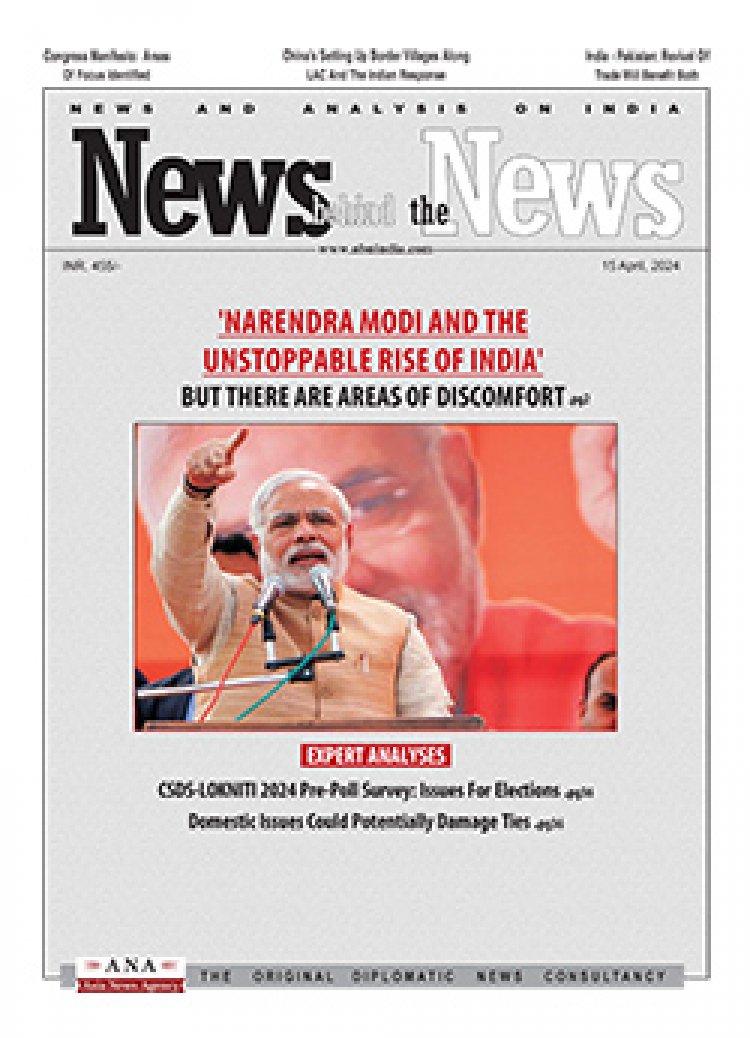The BJP hopes that the New Cabinet will burnish its Image
Amulya Ganguli

There are several messages from Narendra Modi’s elaborate cabinet reshuffle. First, the very expansive nature of the exercise with the cabinet becoming his largest ever with 78 members suggests that it will be the last major restructuring of the team before the next general election.
Secondly, the reshuffle was evidently undertaken with the U.P. assembly elections next year in mind. Hence, the inclusion of as many as seven ministers from the state along with 27 OBCs (other backward castes) and 12 Dalits. The emphasis on the OBCs is evidently meant to counter the BJP’s main opponent in the state, the OBC-dominated Samajwadi Party, while the Dalits are an antidote to the challenge posed by the Dalit-based Bahujan Samaj Party even if the latter has become much weaker in recent years. Even then, the BJP clearly does not want to take any chances in a state where politics is closely linked to caste.
But what the BJP’s wooing of the OBCs and Dalits shows is the party’s transition from being a Brahmin-bania outfit, as it has been known ever since the formation of its predecessor, the Jan Sangh, in the 1950s, to a party of the intermediafe castes and the scheduled castes. What effect this aggressive courting of the lower castes will have on the BJP’s traditional upper caste base of support is not known. Will the latter now drift to other parties like the Congress ?
As it is, the Brahmins are known to be unhappy with the Yogi Adityanath government because of its perceived bias towards the Thakurs who constitute the chief minister’s caste. It is to placate the Brahmins that the BJP admitted a deserter from the Congress, Jitin Prasada, belonging to that community, in the party. But the BJP’s latest tactics are unlikely to please the Brahmins while even the Thakurs, who are also upper caste, can become a trifle uneasy.
But even as the caste politics follows its own course in U.P., much of the attention is focussed at present on the eviction of three prominent ministers – Harsh Vardhan, Ravi Shankar Prasad and Prakash Javdekar – from the cabinet. Vardhan has obviously played the price for the mismanagement of the Covid-19 crisis since he was the health minister. But the ouster of Prasad, who was the Information Technology and Law and Justice minister is less easy to explain.
Did he overplay the nationalist card vis-à-vis Twitter ? Was it prudent of him to take on an American Big Tech giant when India would like to be on friendly terms with its strategic partner, the US, in order to counter China ? How the new IT minister, Ashwini Vaishnaw, a former bureaucrat, handles Twitter will show whether Prasad was on the wrong track or there was some other reason why he was asked to go.
No less mysterious is Javdekar’s exit. Did he pay the price for failing as the Information and Broadcasting minister to counter the adverse publicity which the government received following the exodus of migrant labourers from the cities during the first wave of the pandemic, and the heart-rending scenes of oxygen shortage and bodies floating on the Ganga during the second wave ? In addition, there were the controversies relating to the content of the OTT (over the top) platforms and the digital news portals.
What the departure of these ministers points to is the government’s sensitiveness to any adverse publicity. Considering how the government has come under attack both from the domestic and the international media with India being called “partly free” and “an electoral autocracy”, it is not surprising that a determined effort is being made via the change of ministers to repair the image. Just as the inclusion of the OBCs and dalits is intended to boost the BJP’s political position in the Hindi heartland, the induction of technocrats and bureaucrats is expected to improve the government’s working style.
The fact, however, that the Big Four – home, defence, finance and external affairs – has been left untouched indicates that either the prime minister is satisfied with their performance or that there is no one capable enough to replace them. Yet, questions can be raised about how they have functioned. The home department, for instance, can be held accountable for the criticism of the misuse of the sedition laws by the police to which the Supreme Court has drawn attention.
As for defence, questions can be asked about whether the Chinese are indeed in occupation of some of the Indian territory near the Line of Control. The finance ministry, on its part, is known to be struggling to save and revive the economy while the external affairs ministry has to ensure that Nepal and Bangladesh are not alienated by India’s Big Brother attitude and become susceptible as a result to Chinese overtures.
After the BJP’s successes in the 2014 and 2019 general elections, the party was evidently looking forward to an easy run to the 2024 contest. But the pandemic queered the pitch for it so badly that it is not even sure of a comfortable victory in its stronghold of U.P. which is run by its poster boy, hardline chief minister, Yogi Adityanath. The BJP’s hope is that a strong performance by the new ministers will strengthen its position in U.P. and in the other five states which will go to the polls next year, boosting the party’s morale in the run-up to the big fight in 2024.
















